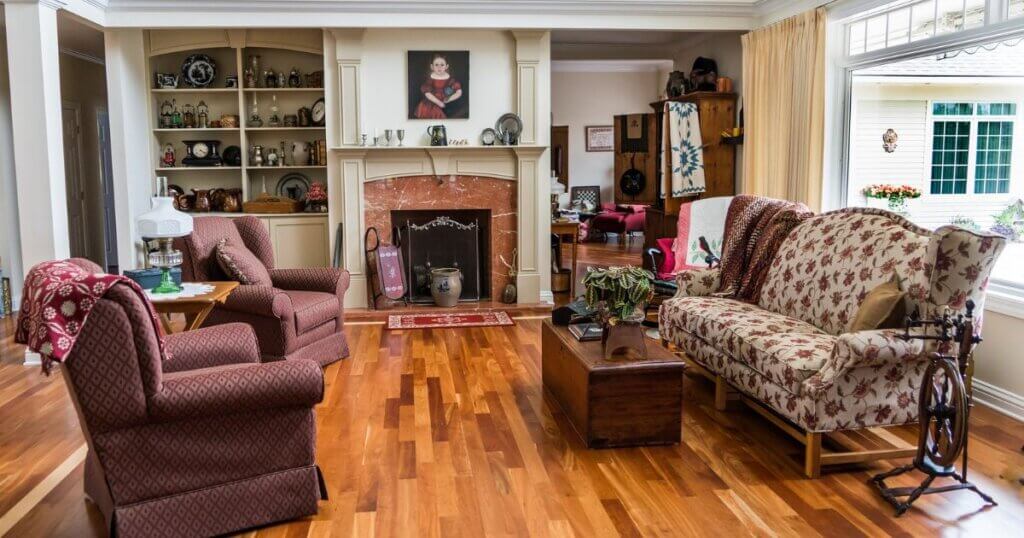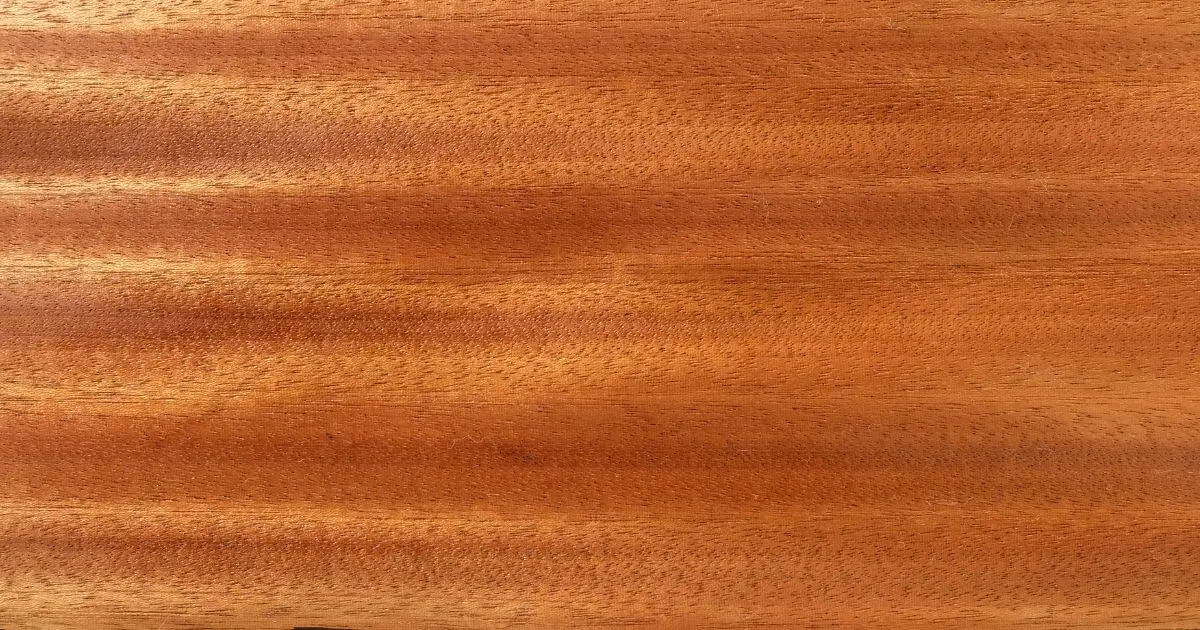Sapele Engineered wood flooring is a type of real wood flooring that’s made up of multiple layers of Sapele wood veneers. The grain of each layer runs in different directions, imparting stability and strength to the wood.
Engineered sapele wood flooring offers the aesthetic appeal of solid sapele wood while providing additional stability and resistance to moisture-related issues.
What is Sapele wood?
Sapele wood is known for its attractive appearance, durability and resistance to rot and moisture. Sapele is a golden to dark reddish brown hardwood that originates from tropical Africa. It’s a large tree that can grow up to 100-150 ft (30-45 m) tall and 3-5 ft (1-1.5 m) in diameter. Sapele is harder and heavier than African mahogany.
Sapele wood is commonly used for Lumber, Veneer, Furniture, Cabinetry, Flooring, Boatbuilding, Musical instruments, Turned objects, and Other small wooden speciality items. It is a popular alternative to Honduras mahogany due to its moderate price.
Sapele Engineered Wood vs Sapele Wood

Durability
There is no doubt that Sapele Engineered Wood is more durable and stronger than solid Sapele Wood. Engineered Wood comprises multiple layers of thin veneers glued together at 90-degree angles to each other. This cross-grain construction helps to distribute the load and reduce the likelihood of warping or cracking.
Appearance
Many people do not want to use engineered Wood because they believe they will get a different texture than solid Wood. The first layer of Sapele Engineered Wood is made of solid Sapele wood so that we can get the same color and texture as Sapele wood.
Price
Sapele Engineered wood floors cost as much or sometimes almost twice as much as solid Sapele wood. Because this engineered Wood is made by manufacturers, they use glue, chemicals, heat and pressure, etc., increasing the material’s overall price.
Pros of Sapele Engineered Wood Flooring:
Natural Appearance and Texture:
Sapele Engineered Wood has the real texture and color of Sapele wood. Ranging from deep reddish-brown to dark brown, it adds a touch of beauty and warmth to any space.
Stability and Durability:
Engineered Sapele wood flooring is more stable and durable than solid wood, making it less susceptible to expansion and contraction due to changes in humidity and temperature. This stability is especially beneficial in areas with varying climatic conditions.
Resistance to Wear and Tear
Sapele is a hardwood species known for its durability and resistance to wear and tear. The treatment process enhances its longevity, making it suitable for outdoor environments.
Easy Installation:
Engineered wood flooring is often designed with click-and-lock or tongue-and-groove systems, allowing for straightforward installation without the need for extensive nails or adhesives. This ease of installation can save both time and money.
Moisture Resistance:
The layered construction of engineered wood provides better resistance to moisture, making it suitable for installation in areas where solid wood might not be recommended, such as basements.
Eco-Friendly:
Engineered wood is often made from sustainable sources, making it a more environmentally friendly choice compared to using solid hardwood without compromising the aesthetic appeal.
Cons of Sapele Engineered Wood Flooring:
Expensive:
Engineered wood flooring, including sapele engineered wood, can be more expensive than some other flooring options, although it is generally more affordable than solid hardwood.
Refinishing Limitations:
While engineered sapele wood can be refinished, the number of times it can be sanded down and refinished is limited compared to solid wood. This limitation might affect the longevity of the flooring, especially in high-traffic areas.

